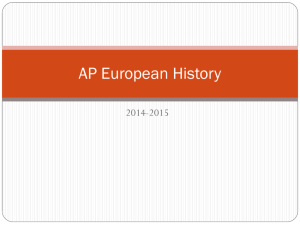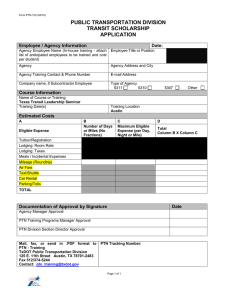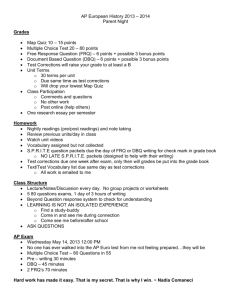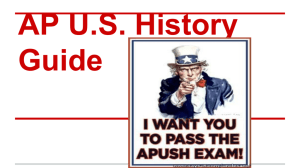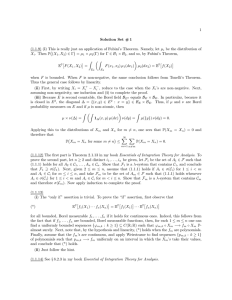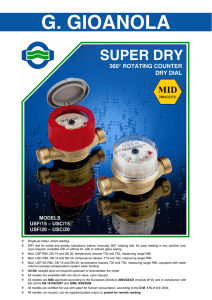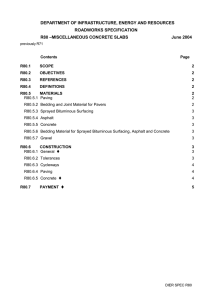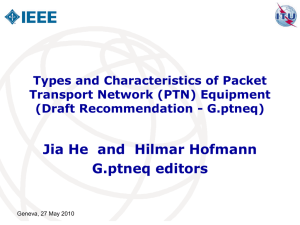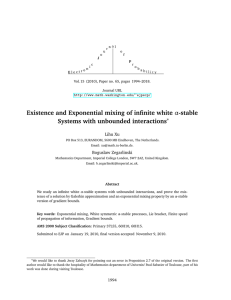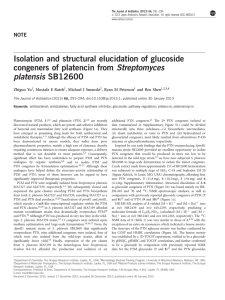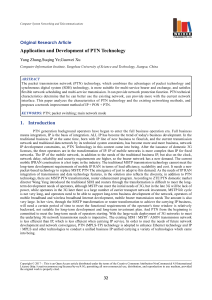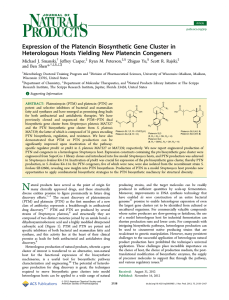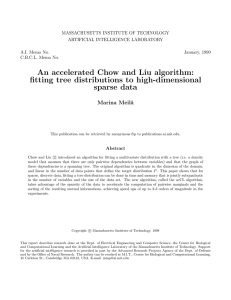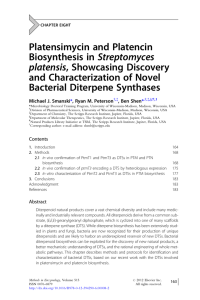AP EUROPEAN HISTORY: - HOW TO “SLAY THE BEAST!!!”
advertisement
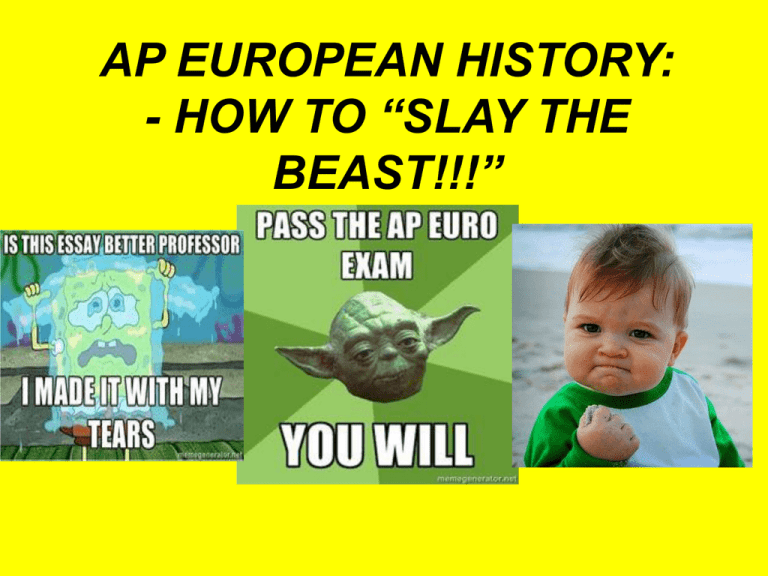
AP EUROPEAN HISTORY: - HOW TO “SLAY THE BEAST!!!” Meet “THE BEAST” (aka: AP Euro. History Exam) *Section 1: 80 Multiple Choice Questions ((A-E) - 55 minutes = 50% of the exam grade) *Section 2: DBQ ESSAY (~45 minutes = 22.5% of the grade) FRQ #1 (1 response from 3 topics; ~35 min.= 13.75%) FRQ #2 (1 response from 3 topics; ~35 min.= 13.75%) SELF-DOUBT / OVERCONFIDENCE “WEAPONS” AGAINST “THE BEAST” Background knowledge/Experience Resilience Focus during the exam Time management Historic Thinking Skills Primary Source Analysis Essay writing Support from fellow students & the teacher Note-Taking / Studying Mastering Specific “Weapons” Note-Taking: • Come up with a method that works for you! • My preferred note-taking style – POWER THINKING NOTES (PTN) • PTN Method – Organizes information into important ideas, details of those important ideas, details of the details of those important ideas, etc. • PTN Method requires ACTIVE THINKING (stopping consistently while reading the textbook and figuring out what to record) • While executing PTN, DO NOT use complete sentences (unless you are writing a definition). Instead, use abbreviations, symbols, acronyms, etc. • PTN works best if you do not procrastinate!!! (5-8 pages / night) Power 1 = Main Idea Power 2 = Supporting Details for Power 1 Power 3 = Supporting Details for Power 2 Example: (see p.338) Ch.12: Recovery and Rebirth… P1: Meaning and Characteristics of the Italian Renaissance (R) P2: R=rebirth (Italy) P3: interest in Greco-Roman culture P3: !!! Individuality and secularism P4: … P2: R.Italy = urban P3: mid-14th cen. – independent cities P4: wealthy centers P2: main idea of the next paragraph!!! P3: details of the main idea… Mastering Specific “Weapons” (cont.) Primary Source Analysis LINK TO PPT: HOW to ANALYZE PRIMARY SOURCES Example: Source: Henry Knighton, Augustinian Monk. Essay Writing in AP Euro. Class: DBQs document based questions FRQs: free response questions • 1 topic - 10-16 docs. (12 docs. on the exam lately!) • Basic core vs. Expanded core points (exam vs. my class – see grading rubrics) • Critical skills: *Primary source analysis *Thesis construction *”Chunk” paragraph skills adjusted to the DBQ format! • Two subgroups – 3 topics in each – One response per subgroup. • Grading rubric – varies depending on the topic (will be provided in my class!) • Critical skills: *Thesis construction *Mastery of content (specific evidence) *”Chunk” paragraph skills DBQ Writing Handout (coming up in class!) • • • • Explanation of grading rubrics Step by step instructions Practice with individual primary sources DBQ on the Black Death (practice in class) FRQ Writing Handout (coming up in class) • Explanation of the grading rubric • Step by step instructions • Practice with content related topics Other Historical Thinking Skills The list includes, but is not limited to: • Chronological reasoning (causation, periodization, continuity/change-patterns over time!) • Comparison and contextualization (+ connection to larger historic processes) Example: Fascism, the more it considers and observes the future and the development of humanity quite apart from political considerations of the moment, believes neither in the possibility nor the utility of perpetual peace. It thus repudiates the doctrine of Pacifism -born of a renunciation of the struggle and an act of cowardice in the face of sacrifice. War alone brings up to its highest tension all human energy…...Fascism denies, in democracy, the absur[d] conventional untruth of political equality dressed out in the garb of collective irresponsibility, and the myth of "happiness" and indefinite progress.... Benito Mussolini, What is Fascism, 1932.

